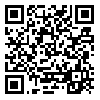Volume 9, Issue 39 (vol. 9, no. 39 2020)
2020, 9(39): 91-108 |
Back to browse issues page
1- , Birjand, Faculty of Agriculture, Department of Agriculture and Plant Breeding
2- Birjand, Faculty of Agriculture, Department of Agriculture and Plant Breeding ,grz1343@yahoo.com
3- Birjand, Faculty of Agriculture, Department of Agriculture and Plant Breeding
2- Birjand, Faculty of Agriculture, Department of Agriculture and Plant Breeding ,
3- Birjand, Faculty of Agriculture, Department of Agriculture and Plant Breeding
Abstract: (2310 Views)
Moisture stress is one of the most important factors reducing crop yield, including oilseed crops, in Iran. Therefore, this study aimed to study the effect of different moisture levels on amino acid content of methionine, proline, soluble sugar and protein of sesame leaf in the 2018 crop year. Data water collected in a split plot-factorial experiment with a randomized complete block design with three replication at the Birjand University of Agriculture Research Farm. In this experiment, moisture at three levels (100, 75 and 50% of sesame water requirement) as the main factor application of calcium nitrate at three levels (0, 5 and 10 Mm) and putrescine at two levels (0.5 Mm and water spraying solution) were considered as sub-factors. The result showed that the interaction of moisture levels, calcium nitrate, and putrescine were significant (p <0.05) for methionine, lysine, proline amino acids and grain yield. The highest amount of methionine amino acid (0.060 mg/g fresh weight) was obtained in the case of 10 Mm calcium nitrate foliar application with putrescine use at 50% water requirement level. The dual interaction of calcium nitrate and putrescine, moisture levels and putrescine, as well as moisture levels and calcium nitrate, were significant on soluble sugar and protein of sesame leaf. In general, foliar application of calcium nitrate and putrescine was the best treatment to reduce the effect of moisture levels on sesame and indicating a synergistic relationship between them in reducing the effect of moisture stress.
Type of Study: Research |
Subject:
Droughts Stress
Received: 2019/10/23 | Accepted: 2020/06/24 | Published: 2021/01/18
Received: 2019/10/23 | Accepted: 2020/06/24 | Published: 2021/01/18
| Rights and permissions | |
 | This work is licensed under a Creative Commons Attribution-NonCommercial 4.0 International License. |



